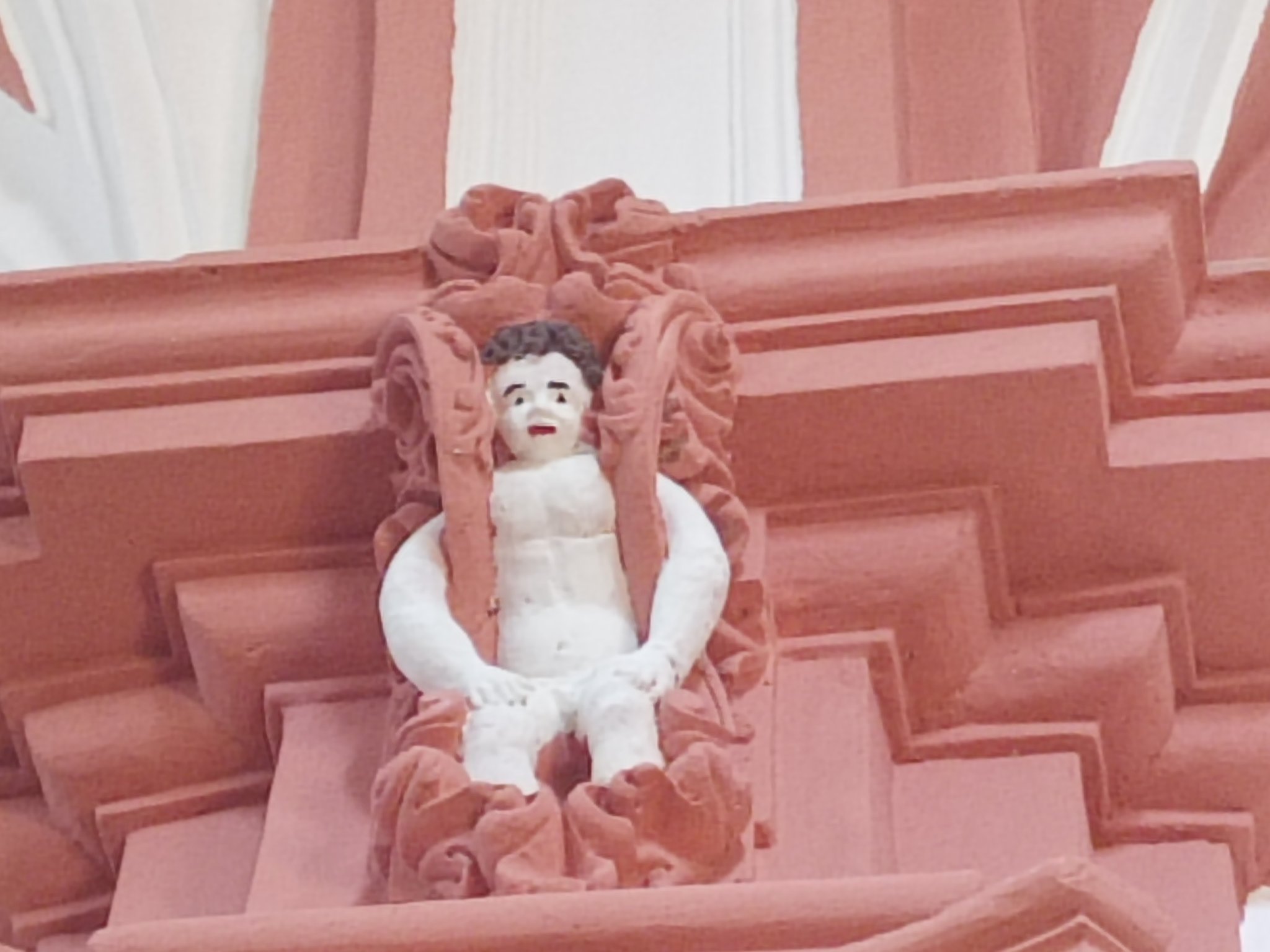What on earth happened to the cherubim of Soria’s Hermitage of the Virgin of Mirón?
Soria Patrimonio, a group dedicated to the preservation of cultural heritage in the Spanish city, is asking this question on X after what appears to be yet another botched restoration in Spain.
The group’s viral before-and-after photos capture the Baroque Hermitage of Our Lady of Mirón church in Soria, built in the 18th century on the ruins of a Romanesque building. Not only did the restoration add a pink trim to the once all-white walls, but it also left the cherubim looking much paler — and weirder.

The new cherubim are ghostly white with bright red lips, uncanny eyes and eyebrows, and disproportionate arms and legs. In comparison to the untouched cherubim still visible in the church, the altered figures appear more cartoonish and decidedly less celestial.
One cherub looks like it’s wearing a column as a backpack.
The restoration reminded some of the infamous “Monkey Christ” in Spain in 2016, when an amateur artist set out to restore a fading portrait of Jesus by Elías García Martínez and unleashed a torrent of memes.
The Spanish Association of Conservationists and Restorationists (ACRE) quickly demanded answers from the Castile and León region. “Until qualified professionals supervise and execute our cultural heritage, we must remain attentive to the unforeseen,” ARCE wrote on X.

The group also released a statement outlining the proper protocol for restoration projects on cultural monuments, which the hermitage is classified as.
In the statement, ACRE references a recent law in the Castile and León region requiring only qualified professionals under supervision to conduct restoration projects such as the one on the Soria hermitage. The group did not mention whether or not the restorer of the Soria hermitage constituted a qualified professional under those guidelines.
ACRE has also advocated for fiercer regulations since the Monkey Christ restoration in Spain and several others, including two horrifying renditions of the Virgin Mary in 2020.

